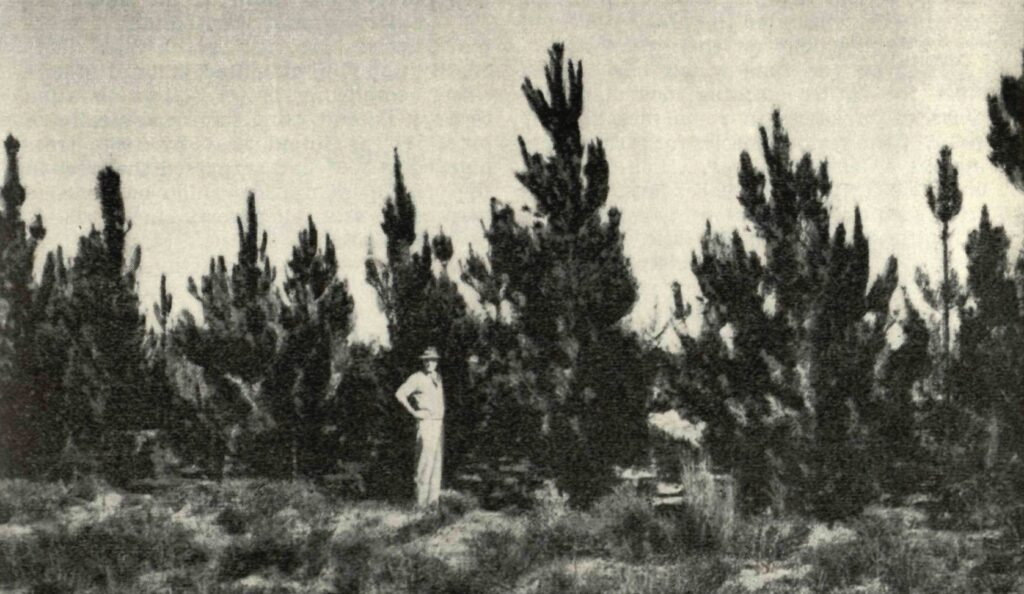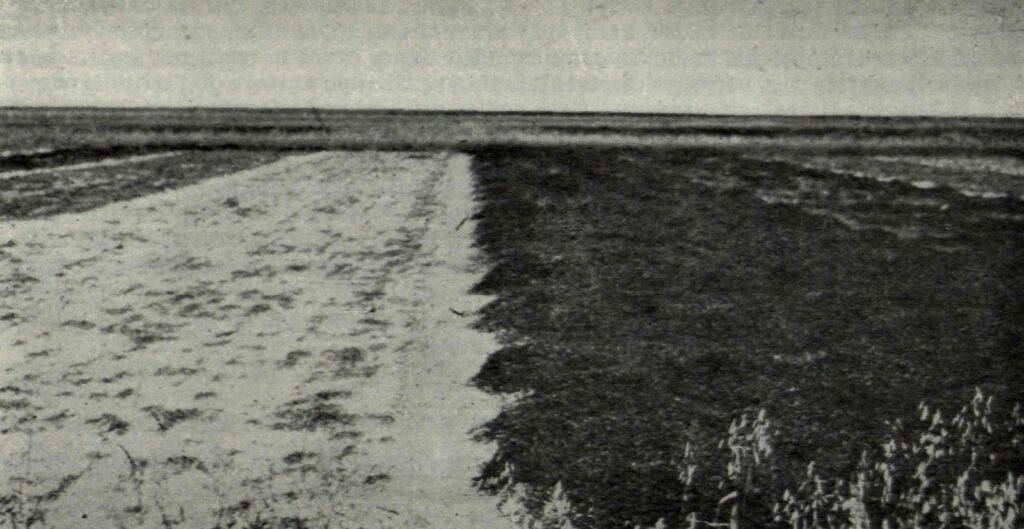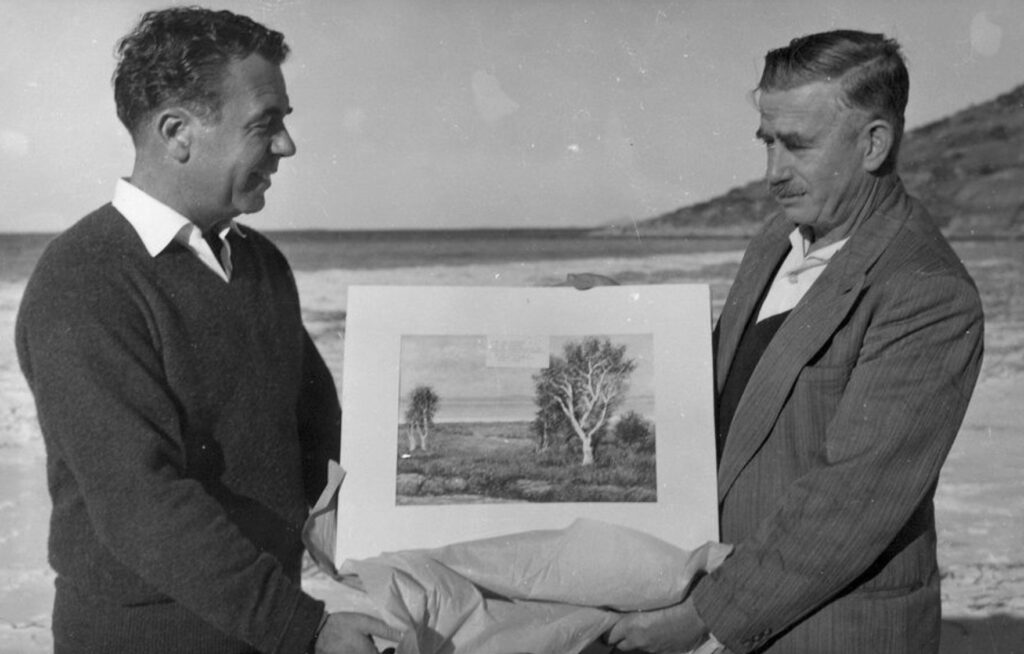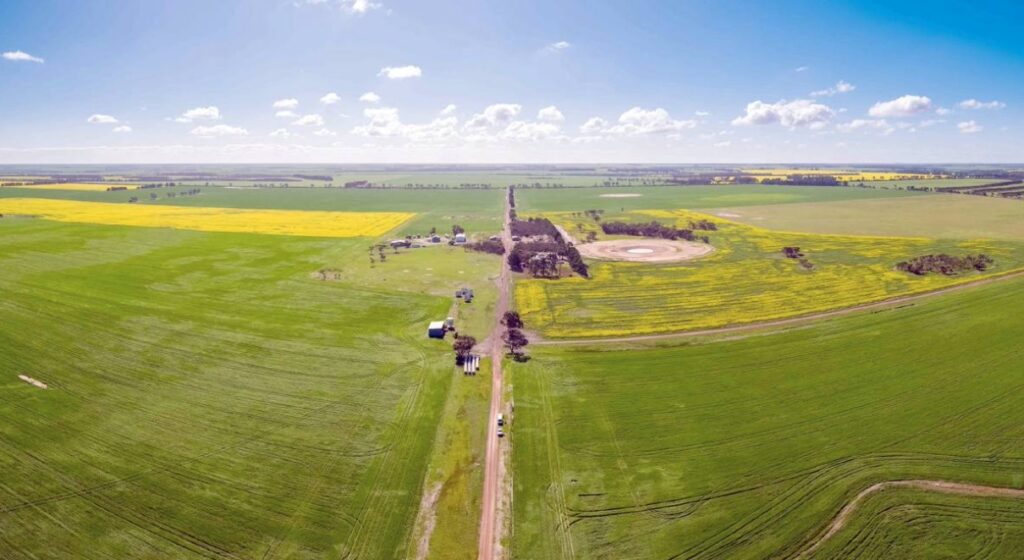Esperance is a vibrant coastal town. It has a temperate climate and rainfall, which produces a reliable growing season of between five and eight months each year. Despite the favourable environment, Esperance had little permanent settlement before 1950. This was mainly due to soil deficiencies on the sandplains that surrounded the town. Immediately north of Esperance the ground rises sharply onto an undulating heath country on sandy soils. A few pioneers in the 1920s sought to open up agricultural development in the region aided by financial assistance from the Agricultural Bank, a government-owned bank set up to assist with the occupation, cultivation and improvement of agricultural land.
In 1924, forester Andy Helms began work with the Western Australian Forests Department. In 1928, he was appointed as the Operations Manager on an 18,000-hectare lease, owned by Esperance Pine Forests Limited, north of Esperance. Helms planted 39,000 pine trees over 200 hectares. However, it soon became apparent that growing pines was more difficult than anticipated in the poor soils. It was also tricky to remove munji (Nuytsia floribunda), the Western Australian Christmas tree.
Helms instead turned his attention to crops, pasture species and fertilisers with some excellent results. He trialed subterranean clover, oats, rye, lupins, spurrey, buckwheat and veldt grass in conjunction with superphosphate, ammonium sulphate and lime fertilisers. With careful land preparation and an annual application of superphosphate, excellent subterranean clover and other legume pasters could be grown. Helms prepared a report for the Minister for Agriculture in October 1930:
“…it will be seen that investigation is now reaching the stage when it is possible, in certain measure, to base the future development on this type of country on facts. The soil deficiencies that exist seem all to be of a controllable nature. Factors which were uncertain and speculative have become known. In short, a small beginning has been made towards solving the problems connected with bringing the Esperance Plain into production. It is an ideal proposition for combining forestry and agriculture to mutual advantage”.

In 1932, Esperance Pine Forests went into liquidation, and the Western Australian Government declined any financial support for further work. The pioneering work of Helms showed that the Esperance Plains could be brought into production. Just before the outbreak of WWII, agricultural scientists identified and researched trace element deficiencies in soil, but nothing came from their discovery. Helm’s work was essentially ignored, and it took a later generation of farmers and investors to reap the benefits of his vision.
By the end of WWII, there was some successful settlement along the short rivers, such as Dalyup, which supported higher natural fertility, and on one or two areas on the sandplain. In 1947, the Esperance Land and Development Committee was formed, instigated by William Stewart. They published articles about farming experiments in the region. Alf Button acquired a farm in the area and was encouraged and supported to carry out some pasture experiments on his property. He applied various combinations of trace elements, including increased superphosphate applications. His trials were promising, and confirmed the need to use copper and zinc to improve soils for pasture and crops on the sandplain area.

Because of the slow development of agriculture in the Esperance region, the government established the Gibson Research Station in 1949. Their first experiments occurred the following year. The next few years saw remarkable progress in pasture establishment as the need for liberal dressings of superphosphate, supplemented with zinc and copper compounds, was clearly demonstrated. Rainfall of at least 500 millimetres a year was also needed to see the improvements.
The development of crops required the removal of as much of the original vegetation by burning and then ploughing with a heavy disc machine. The Gibson Research Station and its work attracted settlers, many from the eastern states, onto farms of 2,500 acres. There was, however, still some doubt regarding the viability of the land, and with no government sponsored scheme, progress was slow and capital investment minimal.
In 1954, the Esperance Downs Development Advisory Committee was formed to obtain government support for settlers in the area. Reports were enthusiastic about the potential of the land, but progress in its development was slow. They cited the success of the private ventures in the 1920s to plant pines and the introduction of over 300 small farms on heavier soils near the local railway line, despite both never flourishing.
With the potential of the region known, attention turned to attracting private capital to boost the development of agriculture and reap the benefits of the findings from the research stations. The sandplain extended about 140 kilometres west and 150 kilometres east from Esperance. The Advisory Committee recommended a new government scheme based on holdings between 800-2,000 hectares producing wool and meat after the land was prepared by an official Settlement Authority. However, a less expensive and more attractive option soon presented itself.
In 1956, American Alan Chase, the head of a syndicate of American businessmen, applied for land on the Esperance sandplain and entered into an agreement with the government to buy one and a half million acres. The government agreed to classify and survey the blocks, build access roads, an abattoir and a fertiliser factory, while the syndicate was to quickly develop half of the planned 650 new farms to the production stage and leased, with an option to purchase by a settler. The other half were to be sold within 15 years.

The Chase syndicate was dubbed the “Hollywood Pioneers”. It included wealthy individuals with connections to USA television, film and entertainment industry, including film star Robert Cummings and television personality Art Linkletter. This remote area in Western Australia suddenly became the centre of world attention. Many predicted an agricultural revolution and a new farming system to follow the conversion of millions of acres of land into an extension of the wheatbelt. Cheap land helped drive a perceived boom in Western Australia.
However, the local farmers had doubts about the American farming techniques. Ignoring the available local information, the Americans used rough and hasty methods to prepare the land, which proved futile, and the venture failed after only one year. Some of the blocks were sold undeveloped (about 60,000 acres), and the remaining were handed back to the government in a spectacular failure. It wasn’t a proud moment for the state.
When the Chase Syndicate failed to meet obligations under its agreement with the government, its interest in the land was re-assigned to the Esperance Land and Development Company (ELD), a consortium headed by Chase International. ELD was one of the most significant corporate farming projects undertaken in Australia. ELD was again bankrolled by Americans. This time it was by big companies willing to listen to local advice. They included Chase Manhattan, Dillingham, JH Whitney and American Factors. It coincided with the re-discovery that trace elements added to the poor, sandy country could transform it into very productive agricultural land.
In the end, 587,000 hectares was divided into 458 units, with about 20 per cent set aside as reserves. The result was that from only 98 farms in 1955, the Esperance sandplain, by 1975, accommodated 501 holdings on 700,000 hectares. In addition, the Esperance farmers are credited with introducing minimum tillage and direct sowing techniques to preserve the light sandy soils.
The key, however, to the successful development of land around Esperance was fertiliser added to the soil to make it productive. It was found that copper and zinc were deficient and nitrogen and phosphorous were in very low concentrations. The soil required a mixture of superphosphate, copper and zinc, followed by subsequent maintenance dressings of straight superphosphate. In 1962, it was decided to construct major fertilisation works at Esperance to service the needs of the local agricultural industry. Esperance Fertilisers Ltd built the plant, which had an initial production capacity of 60,000 tons of superphosphate a year, at a cost of £1,500,000.
It is now part of Western Australia’s agricultural history that trace elements and fertilisers added to the Esperance sandplain helped turn much of the district into prime farming land. In the space of two decades, a major agricultural region emerged, supporting half a million sheep and a significant number of cattle. And it all started from the initial and forgotten pioneering work of a forester.

Meanwhile, some 50 odd years later, a few MIS companies sold their souls and told unsuspecting investors that Tasmanian blue gum plantations would flourish around Esperance.
Mr Helms would be turning in his grave if he knew that members of his noble profession, at best, stayed silent or, at worst, were complicit in this subterfuge.
In the interest of historical accuracy, Professor Richard Harper was based in Albany in the 1990s, to help develop the bluegum industry. Every year he was recruited for field days to address the future for bluegums in Esperance, but he complained to me that each time he had to report that the future was still not viable.
Inevitably this would be unacceptable to his superiors at the time, and also no doubt, unacceptable to the commercial interests that bought farms cheaply and contracted to establish plantations.